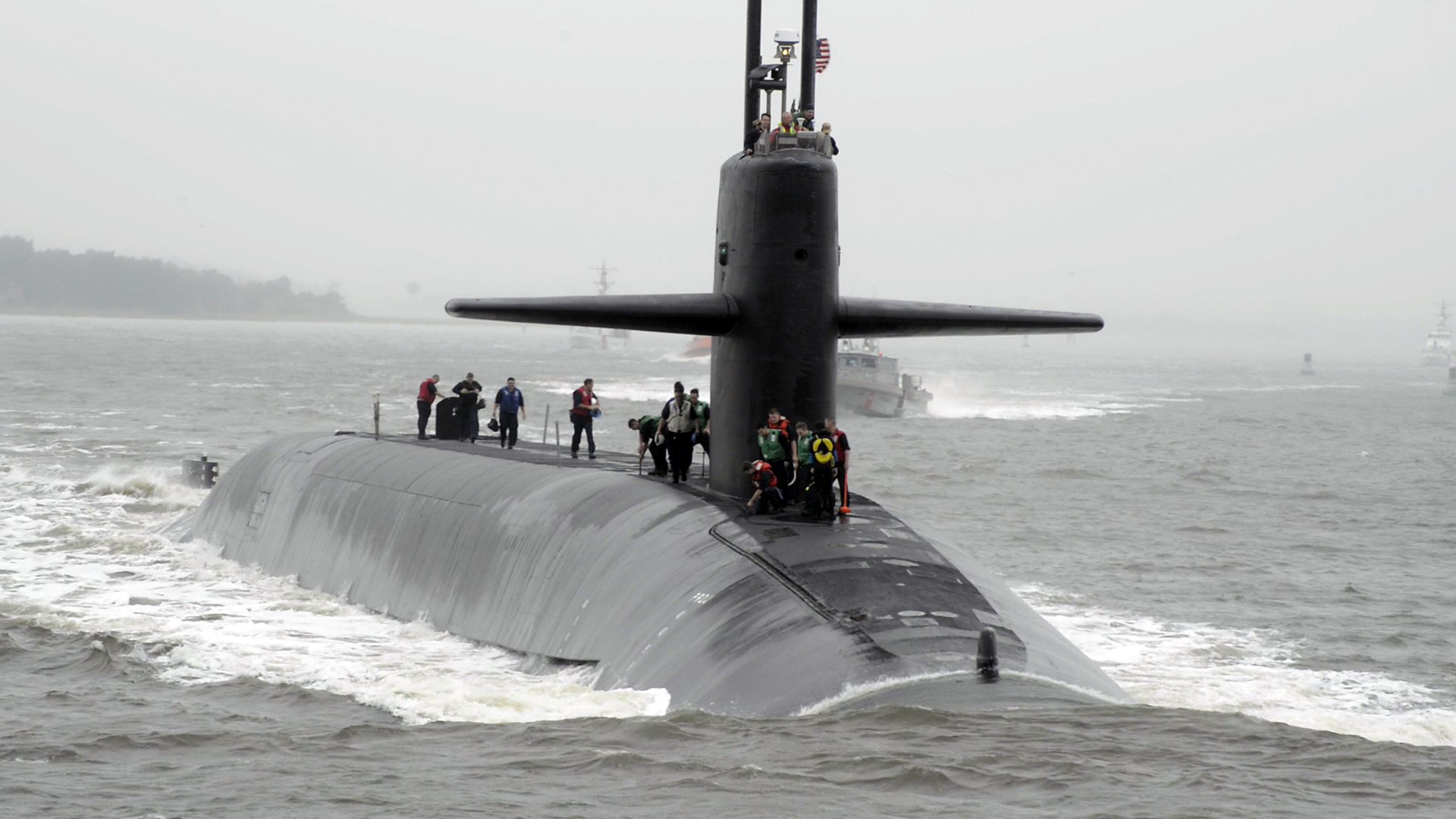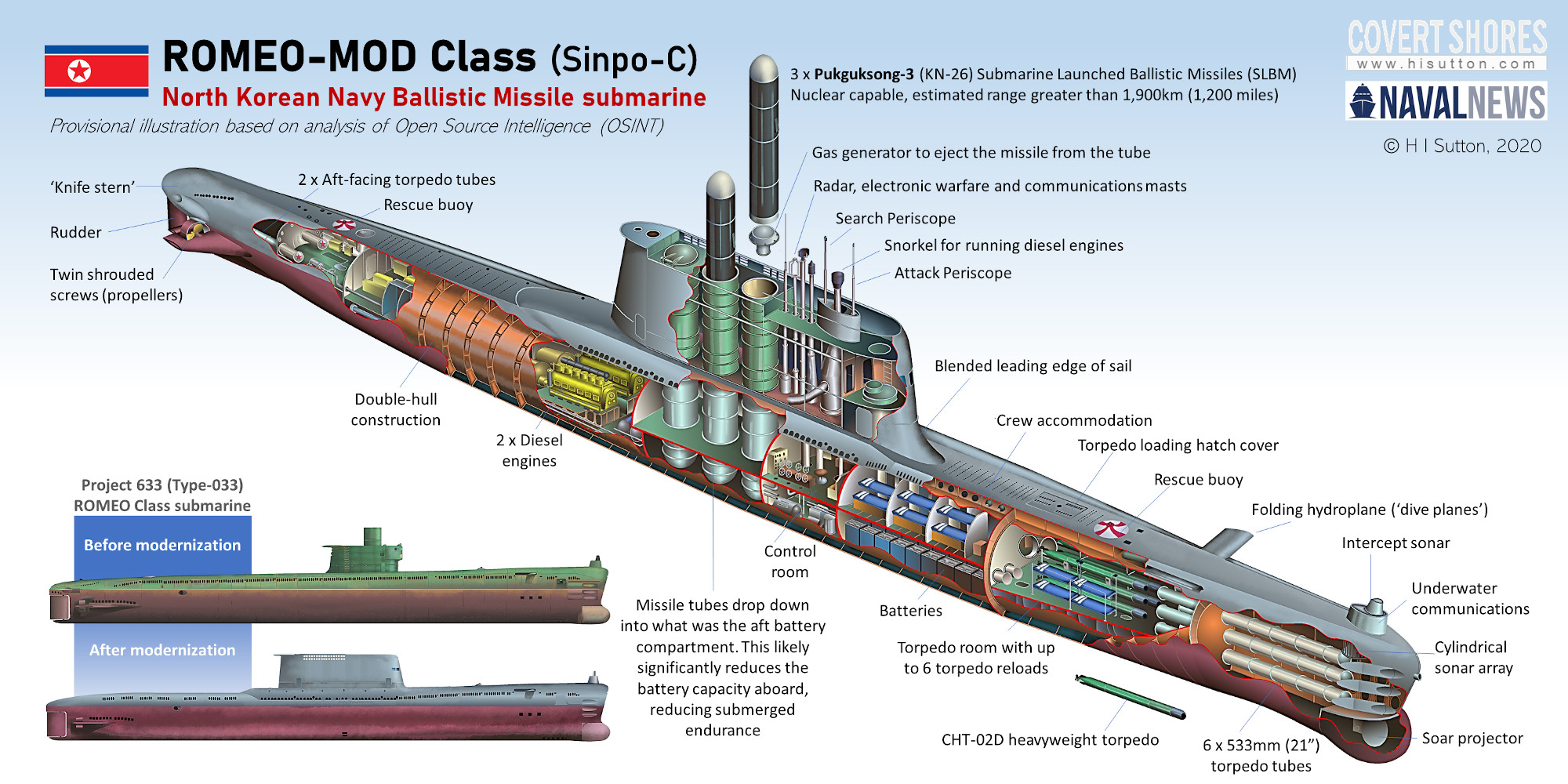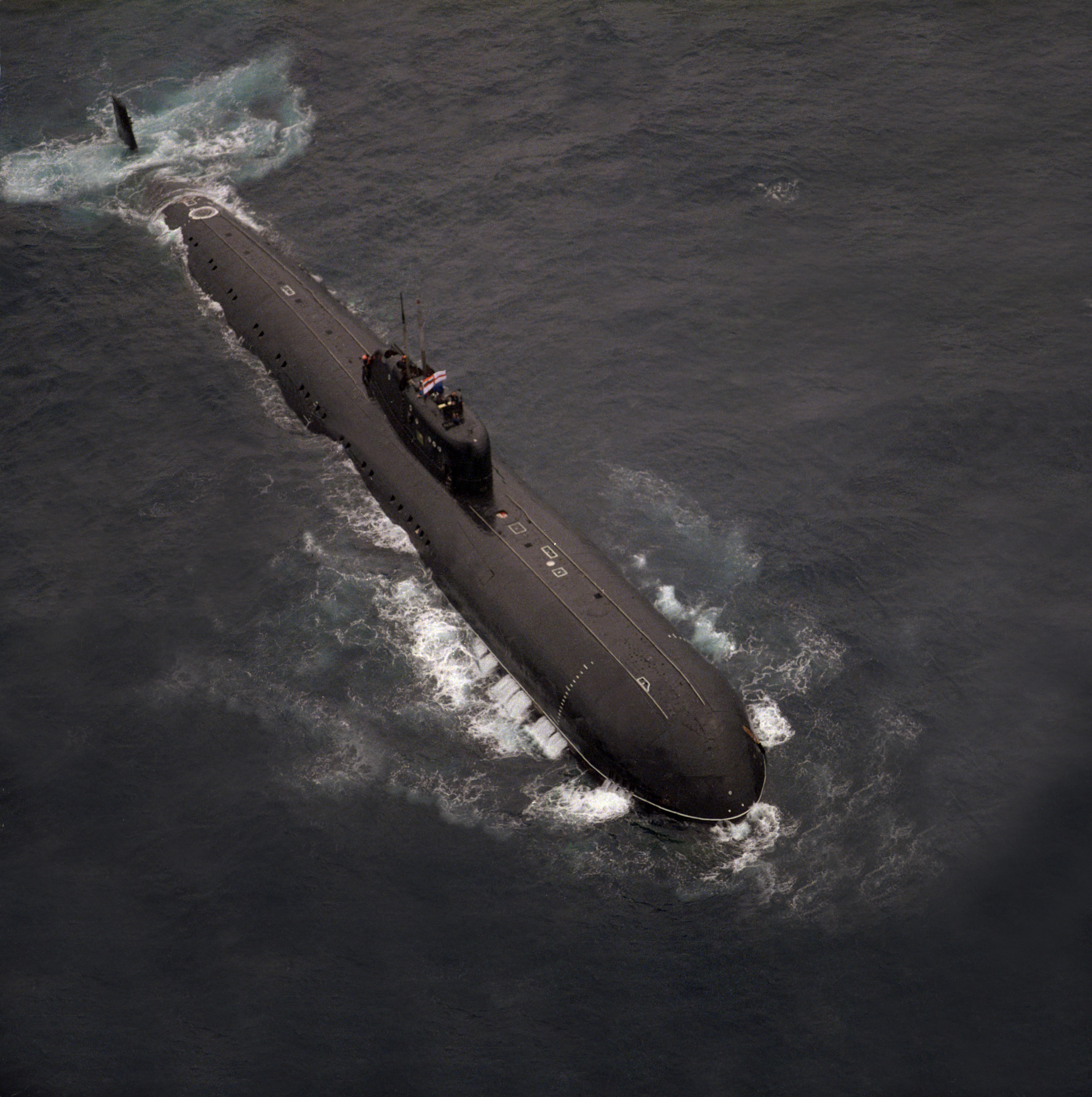November Class Submarine - Hunters, but they also marked a breakthrough in giving the Soviet submarine fleet global reach in underwater operations. They also provided painful lessons, paid for in lost or irreparably injured human life, the risks associated with the use of nuclear energy and the high price to be paid for technical errors and lax safety procedures.
The original specifications drawn up in 1952 for the Soviet nuclear submarine envisaged their use for launching huge nuclear torpedoes at enemy ports and coastal cities. At that time, the Soviet Union lacked long-range missiles or bombers that could easily hit most of the continental United States. However, when these capabilities emerged in the mid-1950s, the Project 627 design was revised to reflect the anti-ship role, with eight torpedo tubes located in the bow and combat systems taken from the Foxtrot-class diesel submarines.
November Class Submarine

, launched in 1957 and made its first nuclear-powered voyage in July 1958 under Captain Leonid Osipenko, using a reactor design overseen by renowned scientist Anatoly Alexandrov. The large torpedo-shaped ship displaced more than four thousand tons submerged and was 107 meters long. Its double-hull interior was divided into nine compartments, housing a crew of 74 sailors and thirty officers.
Foxtrot Class Submarine
Quickly demonstrated the extraordinary durability of nuclear submarines when submerged on two-month cruises. In 1962, she became the first Soviet ship to travel to the North Pole, while sister ship,
, was the first submarine to cross the Drake Passage submerged in a voyage of twenty-one thousand kilometers that lasted fifty-two days.
It was soon joined by twelve more November ships of a revised design designated Project 627A, distinguishable by the bulbous sonar dome under the bow, as well as one Project 645 prototype powered by the more powerful VT-1 liquid metal experimental reactor. efficiency Fourteen November-class boats were deployed in the Third and Seventeenth Divisions of the Northern Fleet, but later four were transferred to the Pacific Fleet by transit under the Arctic ice.
The VM-A 627 engines were more powerful than their American contemporaries, speeding the Project 627 up to thirty knots (34.5 mph). However, the 627 lacked another quality generally expected of a nuclear submarine: reactors
Leak' May Reveal Russia's Answer To The Virginia Class Attack Submarine
Noisy, making Project 627 boats undetectable despite the use of stealth propellers and the first anti-sonar coating applied to a nuclear submarine. This lack of stealth, combined with their inferior sonar array, made the November class unsuitable for hunting enemy submarines.
While the latter was moving at full power, causing a minor panic in the Navy leadership that led to the adoption of the Los Angeles-class fast attack submarine, some of which remain in service today.
However, the power of November-class reactors was bought at the price of safety and reliability. The lack of radiation shielding resulted in frequent crew illnesses, and many of the ships suffered multiple reactor failures throughout their lives. This lack of reliability may explain why the Soviet Union sent conventional Foxtrot submarines instead of November-class ships during the Cuban Missile Crisis, despite the fact that the diesel boats needed to surface every few days and were therefore cornered and outgunned. patrolling American ships.

In fact, the frequent and catastrophic disasters aboard the Project 627 boats seem almost like dire public service announcements about everything that could go wrong with nuclear submarines. Many of the accidents reflect not only technological deficiencies, but also the weak safety culture of the Soviet Navy.
File:us Navy 111110 N Jh293 108 The Virginia Class Submarine Uss Texas (ssn 775) Moors Alongside The Submarine Tender Uss Emory S. Land (as 39) In Subic.jpg
Began the trend on October 13, 1960, when a failed steam turbine nearly led to a reactor meltdown due to loss of coolant. The crew managed to rig up an emergency water cooling system, but only after radioactive gas contaminated the entire ship and severely exposed many crew members.
, which distinguished itself in the medical evacuation of an Arctic expedition in 1963, also had a reactor failure in 1961, necessitating its replacement in subsequent years.
On various occasions while refueling at the base. Repair crews misdiagnosed the effects of the first event and mishandled the second and were eventually forced to evacuate the reactor room, leading to fires breaking out throughout the ship. The Soviet crew flooded the ship with 250 tons of water to extinguish the flames, spreading the radioactive water throughout the ship. Seven men were heavily irradiated and the reactor required a complete replacement before it could return to active operation three years later.
, the first nuclear-powered Soviet submarine, was on patrol in the Mediterranean on September 8, 1967, when a hydraulic fire broke out in her torpedo tubes, resulting in a build-up of carbon monoxide and killing thirty-nine sailors. The entire commanding crew passed out, except for a lone officer who managed to get the ship to the surface and save the vessel. A later investigation concluded that the fire may have been caused by a sailor smoking in the torpedo compartment.
Hmas Ovens: Oberon Class Submarine Stern Editorial Photo
On May 24, 1968, a lone Project 645 boat experienced the rupture of its port reactor on May 24, 1968 in the Barents Sea, despite the crew's warning that the reactor had suffered a similar failure in 1967 and had not yet tested it for operation. . well The entire crew of 124 was irradiated with radioactive gas, but Captain Leonov refused to take emergency measures until the next hour because of his faith in the reactor. Shortly after the ship detonated its starboard reactor, five crew members died from radiation exposure within a month, and another twenty-five were to follow in the following years. Correction
In the end it turned out to be too expensive a proposal, so it was defeated by dredging in Stepovoy Bay in waters only thirty-three meters deep, instead of the three to four thousand meters required by the IAEA.
Was participating in the Okean 70 war games off the Bay of Biscay when it suffered simultaneous short circuits in the command center and reactor control room, causing a fire through the air conditioning system. The captain managed to get the ship afloat and the crew almost escaped with minor loss of life, except that the Soviet Navy ordered about half the men back aboard to make emergency repairs and pilot the ship home. An encounter with a sea storm resulted in the damaged boat sinking to the bottom of the ocean, taking with it fifty-eight crew members and four nuclear torpedoes.

The November-class ships finally began to retire in the 1980s and early 1990s, but not before suffering a few final accidents of no fault of their own. August 1985,
Uss Connecticut: How Did A $3 Billion Us Navy Submarine Hit An Undersea Mountain?
As the Soviet Union was replaced by an economically collapsed Russia, many decommissioned nuclear submarines were left rusting with nuclear fuel on board, leading to security concerns from abroad. International donors allocated $200 million to scrap the wrecks in 2003. Flimsy pontoons were welded together.
To activate a tow to a scrapping site, but on 30 August a storm tore away one of the pontoons, causing the ship to begin to break down around midnight. The Russian Navy was unable to respond until several hours later, when the submarine was sunk, taking with it eight hundred kilograms of spent nuclear fuel and nine of the ten sailors who manned the pontoons with it. Plan for growth
This is just a summary of major accidents on November-class ships, most often occurring in Echo and Hotel-class submarines equipped with the same nuclear reactors. Submarine operations are, of course, inherently risky; the US Navy also lost two submarines during the 1960s, although it has not lost any since.
Sébastien Roblin has a master's degree in conflict resolution from Georgetown University and served as a university instructor for the Peace Corps in China. He also worked in the field of education, editing and refugee resettlement in France and the United States. We are currently writing about the security and military history of the Cold War, which reached a new level of tension after the explosion of the first Jo 1 atomic bomb in the Soviet Union, and it became clear that not only the world must enter a nuclear arms race, but also a race to build a system to produce energy the likes of which the world has never seen before.
Russia's New Laika Class Submarine: A Threat To The Us Navy And Nato?
With many tests over the years in secret laboratories in the United States, France, and the United Kingdom, the ultimate goal of creating an effectively unlimited power source for a military submarine has finally arrived in the United States, led by none other than an admiral. Hyman. G Rickover.
January 1955 Captain Eugene Wilkinson flashed the news that would eventually change the world of submarines forever simply by reading "On the Road to Nuclear Power".
The sea trials and exercises that followed showed that this was almost certainly the way to go for submarines, not only could they go faster for much longer but they could wreak havoc on the current anti-submarine weapons of the time.

Curiously, prior to this development, the Soviet government banned any study of the possibility of developing a reactor for a submarine, fearing that it would slow down the production of the atomic bomb. however, with Nautilus now proving such a threat and the realization that Nautilus wasn't the only one
Typhoon Class Submarine
Seawolf class submarine model, virginia class submarine, ohio class submarine model, virginia class submarine model, virginia class submarine layout, balao class submarine model, virginia class submarine interior, gato class submarine model, ohio class submarine, gato class submarine blueprints, submarine class, columbia class submarine
0 Comments